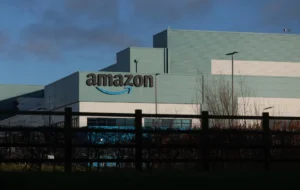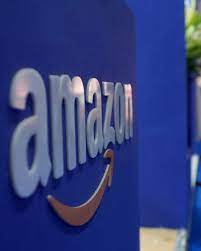
“Amazon Tariffs Increase the Competitive Advantage of U.S. Sellers”2025

The e-commerce behemoth Amazon continues to be a major force in determining the dynamics of international trade in a world market that is becoming more interconnected by the day. The impact of tariffs especially those resulting from the ongoing trade tensions between the United States and China is one of the most important recent developments affecting this landscape. Although tariffs are frequently criticised for raising prices and upsetting supply chains they have unintentionally produced a benefit for one particular group: American Amazon sellers. Domestic sellers are in a better position and have a renewed competitive edge on the platform as a result of tariffs raising the cost of imported goods. However what are the implications of this change for buyers sellers and the larger e-commerce sector?
Pahalgam Terror Attack
The Tariff Landscape: A Brief Overview

In essence tariffs are levied as taxes on goods that are imported. To correct trade imbalances and safeguard American industries the US has imposed a variety of tariffs on goods made in nations like China in recent years. These tariffs have resulted in higher prices longer lead times and more complicated logistics for Amazon sellers who source their products from foreign countries particularly China. For instance the seller now pays $12.50 before any additional shipping or handling costs for a $10 product that was imported from China and subject to a 25% tariff. This increase has a noticeable effect on pricing and profitability when it is scaled across hundreds or thousands of units.
The Domestic Advantage

While overseas sellers grapple with rising costs domestic sellers are seizing the moment. Here’s how tariffs are giving U.S.-based Amazon sellers a strategic advantage:
Price Competitiveness
With imported goods becoming more expensive due to tariffs U.S. sellers who manufacture or source products locally can offer more competitive pricing. Products that were once undercut by cheaper overseas alternatives are now on a more level playing field or even have the upper hand.
Faster Delivery
One of Amazon’s strongest value propositions is fast shipping. U.S.-based sellers often hold inventory in domestic warehouses or use Fulfillment by Amazon (FBA) allowing them to meet Prime delivery standards more easily than overseas sellers. Tariffs exacerbate overseas delays giving domestic sellers another leg up in fulfilling orders swiftly and reliably.
Stronger Brand Trust
Many American consumers value transparency and domestic production particularly in a post-pandemic world where supply chain disruptions and product safety concerns are top of mind. The “Made in USA” label has gained renewed significance and with tariffs pushing prices closer together many consumers now prioritize local brands over slightly cheaper foreign alternatives.
Reduced Risk and Complexity
Dealing with international suppliers involves multiple layers of risk: currency fluctuations shipping delays customs clearance and now tariffs. U.S.-based sellers who can produce or source locally eliminate many of these variables leading to more consistent inventory and improved customer satisfaction.
The Opportunity for Niche and Small-Scale Sellers

It’s interesting to note that not just big well-established companies are benefiting from this change. Local craftspeople small-scale vendors and producers of specialised goods are also profiting. For instance when consumers seek authenticity and are prepared to pay more handmade or speciality goods—where mass production from overseas used to predominate—are experiencing a comeback. Many vendors have even changed their business strategies moving from white-labeling foreign products to creating their own proprietary brands made in the United States. Higher margins and more sustainable growth are frequently the outcome of increased supply chain control and decreased tariff exposure even though initial production costs may be higher.
Challenges Still Remain

Even with the bright side there are still obstacles for domestic sellers. Local supply chains aren’t always able to scale rapidly and manufacturing costs in the U.S. are generally higher than in nations like China. Tariffs also only change the nature of competition not eliminate it. Astute foreign vendors are adapting by moving their manufacturing to nations free from tariffs or looking into logistics options that lessen their risk. Furthermore in many categories consumers are still price-sensitive. Because the lowest price is still the deciding factor for some commodities U.S. sellers must prioritise customer experience branding and differentiation.
The Road Ahead: Strategic Adaptation

Adaptation is key for Amazon sellers. Although tariffs have shifted the playing field market awareness creativity and agility are still necessary for success. Sellers are in a strong position to succeed if they use Amazon’s tools such as FBA enhanced brand registry and A+ content and embrace domestic sourcing. Amazon is becoming more and more in favour of this change. The platform’s appreciation of the value that domestic sellers provide is demonstrated by initiatives like Amazon Handmade Buy Local and its expanding network of fulfilment centres in the United States. Sellers who can adapt to changing consumer preferences and trade policies will benefit the most.
Final Thoughts
Tariffs have surprisingly created new opportunities for Amazon sellers in the United States despite the fact that they are frequently seen through the prism of economic tension and uncertainty. Tariffs have made it easier for domestic business owners to compete and gain a significant portion of the global online marketplace by reducing the price difference between imported and domestic goods.





